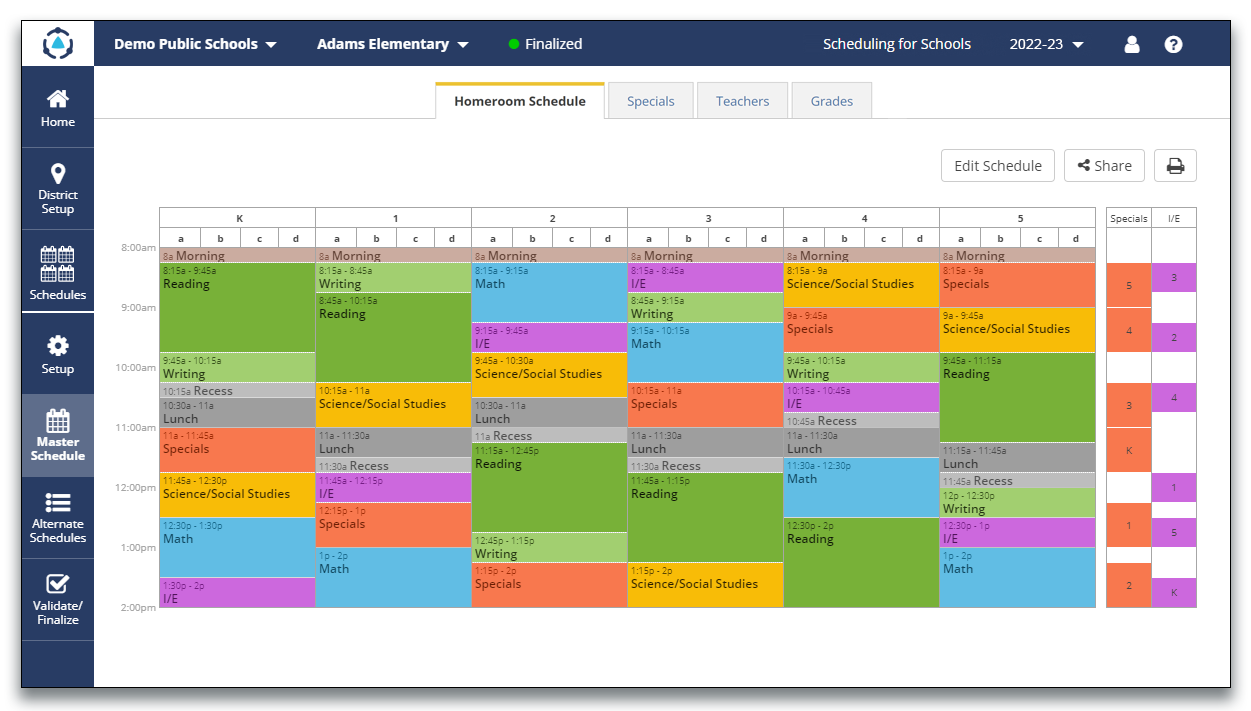
Building an Elementary Schedule - Part 9: Building Alternate Schedules
This 12-part series on How to Build an Elementary School Schedule offers step-by-step guidance and proven scheduling strategies for creating a better elementary school schedule.
By now, you should have a good idea of what your school schedules will look like. However, there will be some days during the school year where things don't go according to plan and your standard daily schedule won't work. What happens if school starts late (for example, snow delay) or ends early (for instance, professional development day)?
Plan ahead and create alternate schedules that align with your learning goals for scenarios like these.
Alternate schedules are typically used for:
Opening delayed by weather or another factor (+1 hr, +2 hr)
Shortened academic day for assemblies
Professional development or parent conference early release
In order to plan for such scenarios, consider the following steps:
1. Set a clear start and end time
Start building the alternate schedule by defining the start and end times for each shortened day scenario. Naming the schedule so everyone understands its purpose is also helpful. For example, “One-hour delay”, “Professional Development Day”, etc.
2. Make adjustments to your period allocation
After the number of minutes in the day has been reduced, create a revised instructional minute plan. For a one-hour delay, which periods would you shorten or eliminate to reduce your regular day by 60 minutes? Consider the impact on students if you have many of these delayed start days. Are certain students always going to miss core instruction? Could this alternate schedule's subjects be reworked to avoid this problem?
3. Recreate the schedule according to the revised instructional minutes
Start by adjusting subjects based on the shorter blocks you defined in your master schedule. Consider the constraints you had when creating your regular schedule, such as lunchroom capacity and staggered specials and interventions. Publish your alternate schedule once you've reviewed it with grade-level teams.
When done thoughtfully and strategically, shorter days can continue to contribute to your student learning goals in equitable ways. Having these schedules ready before the start of the school year also helps set clear expectations for all staff. Alternate schedules also reduce confusion which can further reduce learning minutes on shorter days.
Need Support with Scheduling?
DMSchedules Can Help.
The key to scheduling success is preparation and planning. Start taking action now so that you and your scheduling team are well-positioned for success this scheduling season. If you need help building your elementary school schedule, reach out to us. We can take scheduling off your plate, and create your school schedule aligned with your learning goals.

